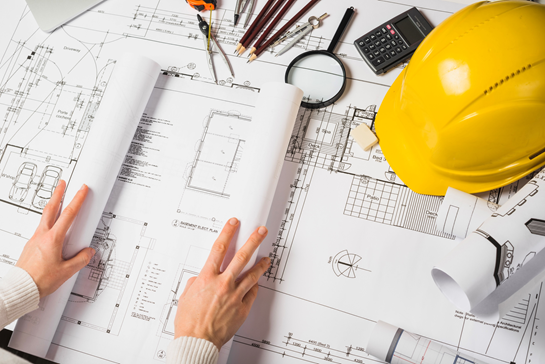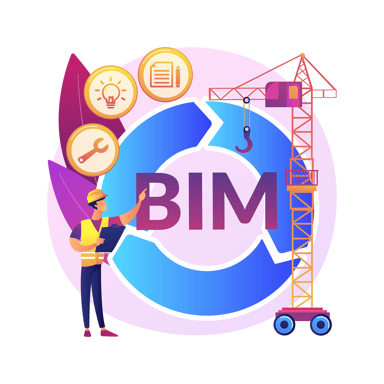Countries around the world are moving to transform the industries towards digitalisation. The construction industry in South East Asia regions is not excluded in this transformation agenda as the enhancement is needed to boost the industry’s productivity and inspire innovative cultures to related industries. Technology such as building information modelling (BIM) is gaining popularity and have prompted strategic actions from the industry stakeholders.
From the unfortunate event of Coronavirus Disease 2019 (COVID-19), we also have learnt that it is necessary for us to be able to work remotely at the same time maintain a high productivity level. In fact, various businesses, including those in the construction industry have significantly invested in digital solutions that help them to accelerate the transformation process in their businesses. Therefore, with the help of BIM, it is seen more effective in handling a construction project throughout the phases.
In the inception phase of a construction project, either for an office building, residential project, or mixed-development projects, requires a substantial amount of capital investment. It is important to manage and control the investment made into the project in ensuring maximum profits and high values.
Construction projects are facing various risks that impact the project cost. Due to this, issues such as escalation of project cost, interim payment, overestimation, contractual disputes and many more may arise. One of the reasons is due to the poor cost management process throughout the project phases. With the development and adoption of BIM in the construction industry, it is crucial to improve the cost aspect of a project in making it more efficient and effective.
In BIM, there are several key dimensions that are crucial for a construction project, namely design (3D), time (4D), cost (5D), and sustainability (6D). With effective implementation of 5D BIM, it allows a cost management process to be carried out more collaboratively and enables control of the project cost with project members using a 3D model in an efficient manner. As a quantity surveyor (QS), it is important to appraise how the implementation of 5D BIM can be leveraged in the cost management practice of the construction industry.
TRADITIONAL QUANTITY SURVEYING
In some countries, the cost management process is still being handled manually, where it involves measurement on the hardcopy drawings and managing project cost and data in the spreadsheets. This practice leads to various issues, unnecessary challenges and prolongation, whether at the project or organisational level.
At the project level, this process is promoting operational silos, where the project members including the client are not capable to engage effectively in providing their inputs, especially when there is a discrepancy. Meanwhile, at the organisational level, it consumes a high amount of time, error-prone to measurement and costing, poor cost database, silo process, poor supervision process, and many more.

TOWARDS 5D BIM IMPLEMENTATION
The implementation of 5D BIM technology shall cover from the inception phase to the closeout phase of the project. For example, the anticipated cost of the project can be generated automatically through various concepts and designs in a 3D model. This can improve in the decision-making process, where traditionally, the initial process of cost estimation required a substantial amount of assumptions and a big allowance to estimate the amount of investment needed for the project.
Meanwhile, during the benchmarking process, activities such as quantity measurement, cost data analysis, or generation of reports can be carried out quickly and professionally with automated functions. This removes the repetitive and administrative works, where the QS often experience in the traditional process.
Subsequently, the post contract stage, where it involves activities like valuation of payment, variation cost update, or remeasurement of quantity can be managed and controlled effectively. Effective collaboration among the project members, such as between the consultant and contractor, or contractor and sub-contractors can significantly reduce the amount of time. Apart from that, disputes arising from payment issues, variation order or final account can also be mitigated with reliable quantities, organised information and 3D visualisation during this stage.
In the future, all the QS must be able to adapt to full digital environment to provide lifecycle costs with 5D BIM technology as a fundamental technology that manoeuvre advanced digital cost management. The establishment of cost data in a digital form significantly improves the management of project archiving, historical data and other data relevant to the QS practice.
THE BENEFITS OF 5D BIM
The implementation of 5D BIM promotes a more collaborative working environment among the project members. Decisions made in the project are well informed through information attached to the 3D model. At the same time, it empowers QS to effectively manage project matters, such as design change, cost advice and at the same time able to make better reporting to the client.
The time required for cost estimation can be shortened by streamlining the 5D BIM processes in a fully digital workflow using Cubicost 5D BIM solutions. Besides increasing utilisation of the BIM model, this also promotes better collaboration with a design team that models the project in other digital platforms. The usage of the BIM model can significantly increase the efficiency of the quantification process as the project information and specification have already been attached to the 3D model.
Cubicost 5D BIM solutions can also extract the quantities from either PDF or CAD drawings more than 50% faster compared to the traditional method. One of the unique features of Cubicost 5D BIM solutions is that the measurement rules are embedded in the application. This way QS can also make cost-saving in a project by focusing on high-value tasks, avoiding measurement error and achieving high accuracy of quantities. High productivity, professionalism and quality of service by the QS that used Cubicost 5D BIM solutions have contributed to the high level of satisfaction of the clients.

STEPS TO 5D BIM ADOPTION
To materialise progressive changes towards digital transformation in cost management practice, it starts with a positive mindset in accepting new ideas, new processes, new technology, and new culture. The management of the companies, quantity surveying associations and academic institutions have to promote digital culture and transform the process embedded with practical digital solutions that stimulate continuous development of the construction industry.
Relevant training and education are needed to ensure the success of 5D BIM implementation. Not just the new generations, but even the experienced QS is expected to acquire new skills and increase the level of competency in the industry to provide high values to the clients. In addition to that, it is important for all the QS to also engage with supportive digital solution partners in realising 5D BIM implementation and goals towards digitalisation.
Glodon Company Limited is very committed in leading and facilitating the transformation and growth of quantity surveying practice in the industry. We have collaborated and partnered with top companies around the world, local governing bodies as well as various institutions in the education sector to provide necessary assistance and guidance in their digitalisation journey. This transformation also aligns with the global agenda in making the development of the construction industry sustainable.



